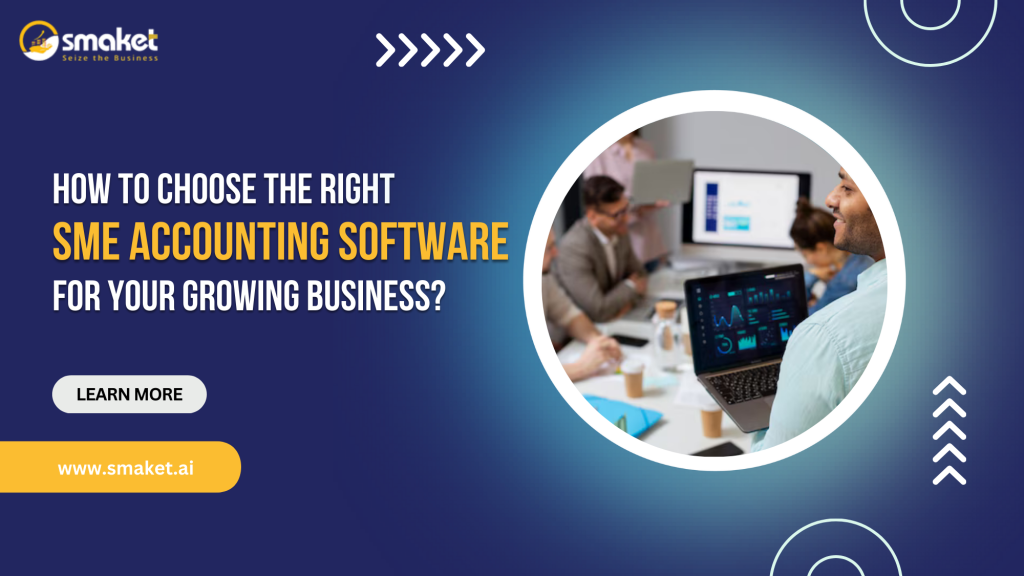As your small or medium-sized enterprise (SME) grows, managing your finances efficiently becomes increasingly important. One of the most effective ways to streamline your financial operations is by choosing the right accounting software. With so many options available, it can be overwhelming to decide which one suits your business needs. In this guide, we’ll walk you through the steps to select the best SME Accounting Software, focusing on features, scalability, integration, and more.
1. Understand Your Business Needs
Before diving into the sea of accounting software options, it’s important to assess your current and future business requirements. Ask yourself the following questions:
- What size is your business? Are you a solo entrepreneur, a small team, or a growing medium-sized enterprise?
- What features do you need? Do you require basic invoicing, tax calculation, and expense tracking, or more advanced features like financial forecasting and multi-currency support?
- How many users will need access? The number of users impacts pricing and scalability options.
Understanding your business needs will narrow down your options and help you select the software that provides the most value.
2. Look for Scalability
As your business grows, so do your financial needs. Choose accounting software that can scale with your business. The software should allow you to easily add more features, users, or transactions as you expand. Some software solutions are designed specifically for small businesses but offer upgrades for growing enterprises, ensuring you won’t have to migrate to a different platform as your operations expand.
3. Consider Automation Features
Manual data entry can be time-consuming and error-prone. One of the key advantages of modern accounting software is automation. Look for software that automates routine tasks such as:
- Invoice generation: Automatically create and send invoices to clients.
- Bank reconciliation: Automatically sync your transactions with your bank account.
- Expense tracking: Automatically track and categorize business expenses.
By automating these tasks, you save time, reduce errors, and ensure that your financial records are always up-to-date.
4. Evaluate Integration Capabilities
Your accounting software should integrate seamlessly with other tools you use in your business. For example, if you use a customer relationship management (CRM) system, your accounting software should sync with it to ensure accurate invoicing and payment tracking. Similarly, integration with inventory management, payroll systems, and e-commerce platforms will help streamline your operations.
5. Ensure User-Friendliness
You don’t need to be an accounting expert to manage your business finances. Look for software that is easy to use, even for beginners. The user interface should be intuitive, and the software should offer clear, simple navigation. Most reputable accounting platforms provide training materials or customer support to help you get started.
6. Cloud-Based vs. On-Premise Software
When choosing accounting software, you’ll face a decision between cloud-based and on-premise solutions. Both have their advantages:
- Cloud-based software is hosted online and accessible from any device with an internet connection. This is ideal for businesses that require remote access or have multiple users in different locations. Cloud software typically offers automatic updates and backups.
- On-premise software is installed on your local computer or server. It provides more control over data but requires manual updates, backups, and might not be as flexible for remote teams.
For most growing SMEs, cloud-based accounting software is the better option, as it offers greater flexibility, security, and scalability.
7. Check for Compliance and Security Features
Financial data is sensitive, and ensuring the security of your accounting records is paramount. Look for software that offers encryption and other security features to protect your data. Additionally, verify that the software complies with the relevant accounting and tax regulations in your country or region. Many cloud-based solutions are updated regularly to meet compliance requirements, saving you the headache of manually tracking changes in laws.
8. Review Pricing and Subscription Plans
Accounting software can come with a variety of pricing models, including:
Subscription-based pricing:
You pay a monthly or annual fee, which is common for cloud-based solutions.
One-time payment:
For on-premise software, you typically pay a lump sum for a perpetual license.
While it may be tempting to choose the cheapest option, consider the software’s value for money. Focus on the features you need rather than paying for extras that may not be useful. Many software providers offer free trials or demo versions so you can test the product before committing.
9. Look for Customer Support and Resources
Good customer support is essential when using accounting software. Look for platforms that offer responsive customer service, whether through live chat, phone support, or email. Additionally, choose software with a robust knowledge base, video tutorials, and a user community that can help you troubleshoot issues and get the most out of your software.
10. Read Reviews and Get Recommendations
Before making a final decision, take the time to read customer reviews and testimonials about the accounting software you’re considering. This can give you insight into potential drawbacks, user experiences, and overall satisfaction with the software. You can also seek recommendations from other business owners or accountants who have experience with different tools.
Conclusion:
Selecting the right accounting software is a crucial step in ensuring your business’s financial health and smooth operations. Consider your business needs, look for scalability, automation, and integration capabilities, and ensure the software is secure and easy to use. By making an informed choice, you’ll have the right tools to manage your finances and support your growing business with confidence.

